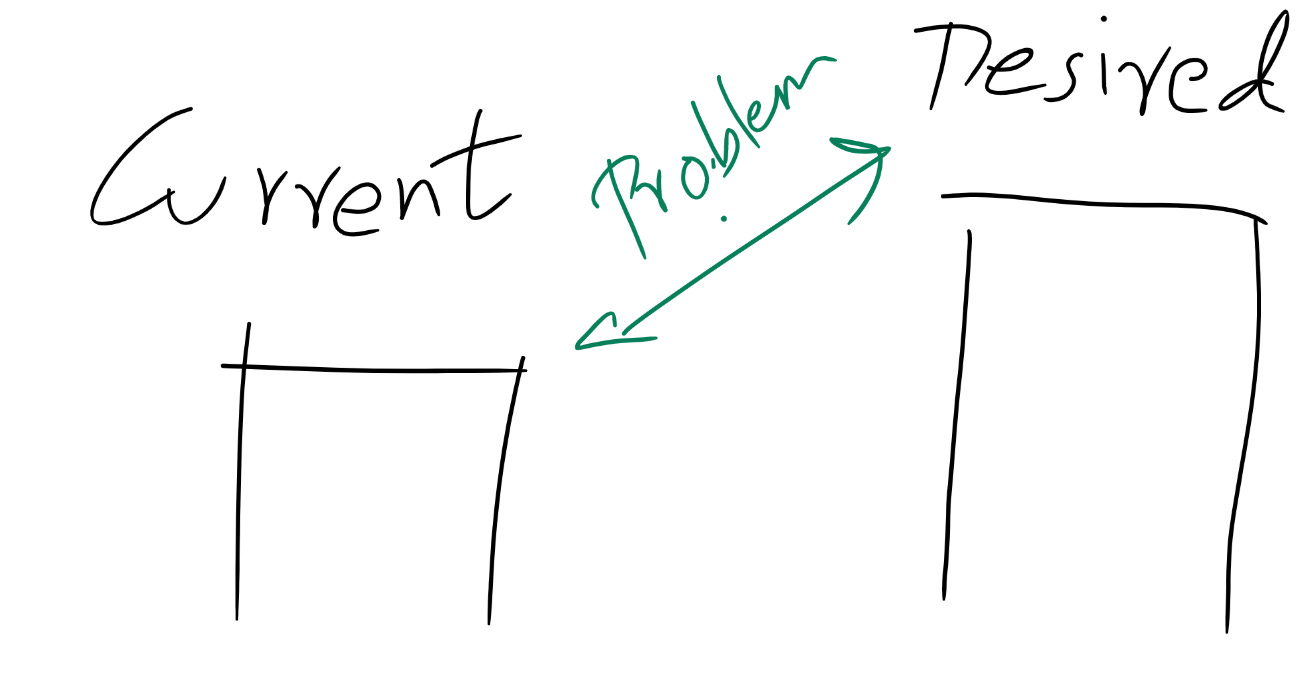Problem-solving
In organisations these days, there’s a lot of focus on problem-solving as a skill. Even in consulting, the two main skills that are indexed on are problem-solving and communication. People index a lot on this but don’t take enough time to explain what it means. It is obviously often not equivalent to solving hard math or physics problems, so what is it then?
What is a problem?
Problem is a gap between a desired state and current state. At a meta level, this gap can dissolve by itself if you change your desires to the current state. But when it doesn’t happen, the problem persists.
You may invoke Maslow’s hierarchy to understand more about the different levels of users and companies desires. All of these desires, when unfulfilled, are ultimately problems.
Why problems?
It may seem that an ideal state in life would be to have no problems. However, human beings will never be devoid of desires and hence problems will always exist. However, the intensity of these problems may vary.
Once you start prioritising your problems, you also give shape to your life. E.g. If your money problem is a higher priority than connection problem, you’ll index more on working than building relationships.
Not just shape, I’d also argue problems are also source of meaning in our lives. This is not to discount the fact that some problems are absolutely crushing and you are better off without them. But the energy generated to solve some of the most important problems we have, often act as a fuel for life.
Approaching a problem
When encountered with a problem, we often think of fight or flight. You either avoid the problem or approach it head-on.
In one of the best classes at IIMA, a professor explained using Mahabharata as an example that there’s a third option - finesse.
He cited how Lord Krishna used finesse to navigate situations. When we think of finesse, we often think of manipulation. However, this is a very limited view.
This finesse in problem solving can come in multiple forms
Inversion: framing the problem differently eg time scarcity can be framed as a prioritisation problem
Expansion: Putting that problem as a subclass of another set of problem and solving that
Reduction: reducing the problem to its most crucial subpart and solving that
Creativity: Expanding the pool of possible solutions
Postponing: this is different than avoiding in the sense that you know you will solve it eventually just not now because of either prioritisation or waiting for the right resources to mature)
What happens after solving?
The solution of a problem creates new problems.
I’ll explain this with an example - there’s a highway on the outskirts of Ahmedabad which was perennially filled with traffic in peak hours. Most of this traffic used to congregate at a few of the traffic signals on the highway. So the municipality decided to build an overbridge bypassing these signals. This definitely improved the efficiency, but now the traffic started getting congregated at other signals. Then the municipality made another overbridge. This cycle continued for years until now, there’s practically a route where you can cross the entire highway without stopping at any signal.
This is a less complex system where there was only one highway and the population growth rate is slow. In a highly dynamic system like a company, especially a growing company, the dance between problems and solutions keeps on continuing. As you go through this dance, you refine your skills, draw patterns between different situations and become better at solving problems.
When we speak of problem-solving in organisations, this complete cycle matters. The nature of problems may vary, from technological to people etc, but the broad structure remains the same. In future posts, will cover the nature of problems in further detail.


